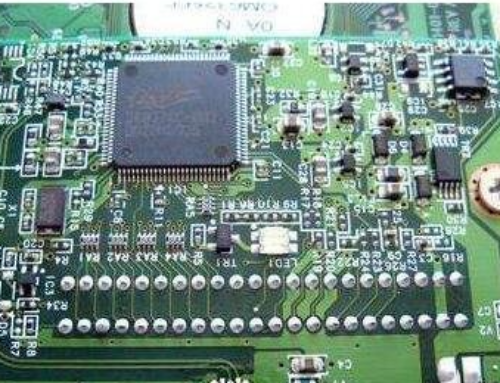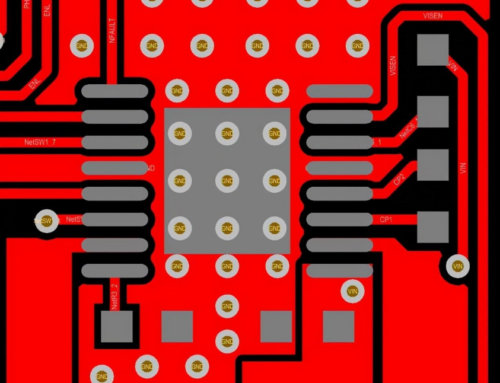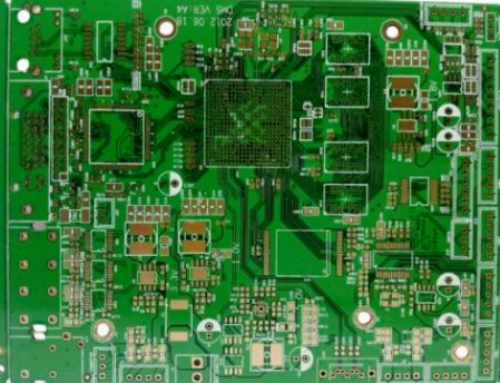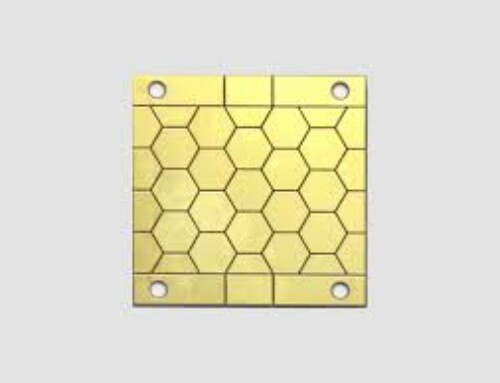The core of PCB design – problem solving
frequently asked questions
1. What is pcb design?
Printed circuit board (PCB) design refers to designing schematic drawings and laying out circuits to produce circuit boards at the lowest possible cost. In the past, this was often accomplished with the help of expensive, specialized tools, but now the increasing availability of free, high-performance software tools—such as DesignSpark PCB—and design models are dramatically speeding up the process for board designers. .
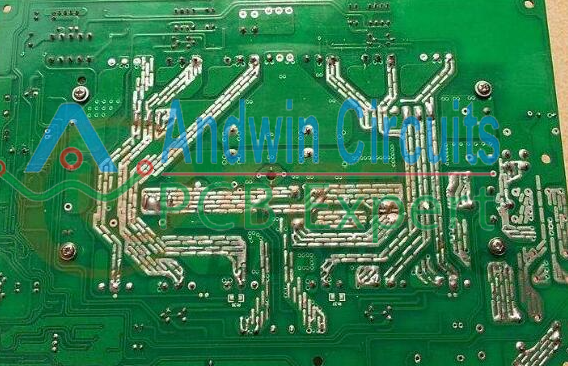
2. How to layout is the first problem that designers have to face.
Although engineers know that a perfect design is the best way to avoid problems, this is still a waste of time and money, while treating the symptoms rather than the root causes. For example, if problems are discovered during the electromagnetic compatibility (EMC) testing phase, it will cause a lot of cost investment, and even require adjustment and re-production of the original design plan, which will take several months.
Layout is the first problem designers have to face. It depends on the part of the drawing where some equipment needs to be set together based on logical considerations. However, it should be noted that components that are more sensitive to temperature, such as sensors, should be installed separately from components that generate heat, including power converters. For designs with multiple power supply settings, 12-volt and 15-volt power converters can be placed at different locations on the board because the heat and electronic noise they generate can affect the reliability and performance of other components and the board. .
3. Defects in circuit board design
The above components will also affect the electromagnetic performance of the circuit design. This is not only important for the performance and energy consumption of the circuit board, but also has a great impact on the economy of the circuit board. Therefore, all circuit board equipment sold in Europe All must obtain the CE mark to prove that they will not cause interference to other systems. However, this is usually only from the perspective of power supply. There are many devices that emit noise, such as DC-DC converters and high-speed data converters. Due to defects in the circuit board design, this noise can be captured by the channel and radiated as a small antenna, resulting in spurious noise and frequency anomaly areas.

4. Far-field electromagnetic interference problem
Far-field electromagnetic interference (EMI) problems can be solved by installing filters at noise points or using metal casings to shield signals. However, paying sufficient attention to the devices on the circuit board that can release electromagnetic interference (EMI) allows the circuit board to use cheaper housings, thereby effectively reducing the cost of the entire system.
In the design process of circuit boards, electromagnetic interference (EMI) is indeed a factor that must be paid attention to. Electromagnetic crosstalk can couple with the channel, disrupting the signal into noise and affecting the overall performance of the circuit board. If the coupling noise is too high, the signal may be completely covered and a more expensive signal amplifier must be installed to restore normal operation. However, if the signal line layout can be fully considered at the beginning of the circuit board design, the above problems can be avoided. Since the design of circuit boards will vary based on different devices, different usage locations, different heat dissipation requirements, and different electromagnetic interference (EMI) conditions, this is where design templates come in handy.
5. Capacitance issues in circuit board design
Capacitance is also an important issue that cannot be ignored in circuit board design, because capacitance will affect the propagation speed of signals and increase power consumption. Channels can couple to adjacent lines or cross two circuit layers perpendicularly, creating an inadvertent capacitor. This problem can be solved relatively easily by reducing the length of the parallel lines and adding a kink in one of the lines to break the coupling. However, this also requires engineering designers to fully consider production design principles to ensure that the design is easy to manufacture while avoiding any noise radiation caused by excessive line bending angles. It’s also possible to run lines too close together, which will create short loops between lines, especially at bends in the lines, which can cause metal “whiskers” to appear over time. Design rule inspections can often flag areas where loop risk is higher than normal.
This problem is particularly prominent in the design of the ground layer. A metal circuit layer has the potential to couple to all the wiring above and below it. Although the metal layer can effectively block noise, it also produces associated capacitance, which affects the running speed of the line and increases power consumption.
As far as the design of multi-layer circuit boards is concerned, the design of through holes between different circuit board layers is probably the most controversial issue, because through hole design will bring many problems to the production and manufacturing of circuit boards. Through holes between circuit board layers will affect signal performance and reduce the reliability of circuit board design, so they should be given full attention.
solution
During the printed circuit board (PCB) design process, many different approaches can be taken to solve various problems. There are adjustments to the design plan itself, such as adjusting the circuit layout to reduce noise; there are also methods for printed circuit board layout. Design components can be installed automatically through layout tools, but the ability to manually adjust the automatic layout will help improve the quality of the board design. Through this measure, design rule testing will rely on technical documents to ensure that the design of the circuit board can meet the requirements of the circuit board manufacturer.
1. Separate different circuit board layers
Separating different circuit board layers can reduce associated capacitance, but this will increase the number of circuit board layers, thereby increasing costs and causing more via problems. Although the use of an orthogonal grid power supply system and ground trace design may increase the physical size of the circuit board, it can effectively utilize the effectiveness of the ground layer in the double-layer circuit board, reducing the capacitance and circuit board manufacturing complexity.
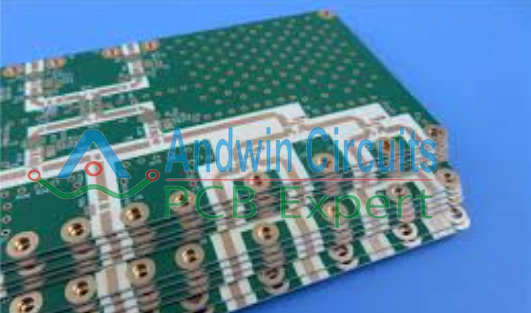
2. Use design tools skillfully
(1)DesignSpark PCB
Design tools, including DesignSpark PCB, can help engineering designers solve many problems at the beginning of design, but engineering designers still need to have a full understanding of the design requirements of printed circuit boards (PCB). For example, if the editor of a printed circuit board (PCB) needs to know the number of layers of the circuit board at the beginning of the design, for example, a double-layer circuit board needs a ground layer and a power supply layer. layer, consisting of two independent layers. Automatic component layout technology is very useful and can help designers spend more time designing the layout area of the equipment. For example, if the power supply equipment is too close to sensitive signal lines or areas with high temperatures, A lot of problems will arise. Likewise, signal lines can be automatically routed while avoiding most problems, but analysis and manual manipulation of high-risk areas will help greatly improve the quality of printed circuit board (PCB) designs. , improve profits and reduce overall costs.
(2) Design rule detection
Design rule detection is also a very powerful tool that can detect lines to ensure that the distance between lines is not too close, causing the loop to be too short. However, the overall design still has high economic value. Design planning inspection tools can also be used to inspect and adjust power and ground layers to avoid large associated capacitance areas.
The above tools will also be of great help to Gerber and Excellon, helping them to perform circuit and circuit board printing, and through-hole drilling in order to produce the final design. In this way, the technical documentation is closely linked to the board manufacturer.
In conclusion
There are many issues to consider during the design of a printed circuit board (PCB), and tools, including DesignSpark PCB, can effectively handle most of them. By adopting certain best practice guidelines, engineers can effectively reduce costs, improve board reliability, meet system specifications, and achieve system certification at a lower cost, thus avoiding further problems.
Our company uses good design solutions in design, and the PCB circuit boards we supply can effectively avoid the above-mentioned problems. It is guaranteed to be more convenient and efficient during your use. Safety. If you are interested, please contact us

